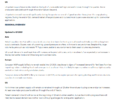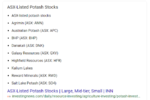- Joined
- 14 April 2011
- Posts
- 371
- Reactions
- 4
Diggers and Drillers did a nice piece on potash.
Naru and Ocean Island were made of the stuff. Colonist peeps raked in millions for decades, now Ocean Island doesn't exist and Naru is an ex-detention center. Maybe it's potash's time again?
With the GFC2 playing it's part in the background. Surely potash will be more useful than gold/silver if things really go belly up. At least you can sprinkle some potash on your home grown vegies when there's nothing else left. It would have to be more defensive than WOW?
I know STB is a asx potash stock and there are a few others.
Is potash another next 'buzz' or do you think in 10y time it may have some real growth?
Naru and Ocean Island were made of the stuff. Colonist peeps raked in millions for decades, now Ocean Island doesn't exist and Naru is an ex-detention center. Maybe it's potash's time again?
With the GFC2 playing it's part in the background. Surely potash will be more useful than gold/silver if things really go belly up. At least you can sprinkle some potash on your home grown vegies when there's nothing else left. It would have to be more defensive than WOW?
I know STB is a asx potash stock and there are a few others.
Is potash another next 'buzz' or do you think in 10y time it may have some real growth?




